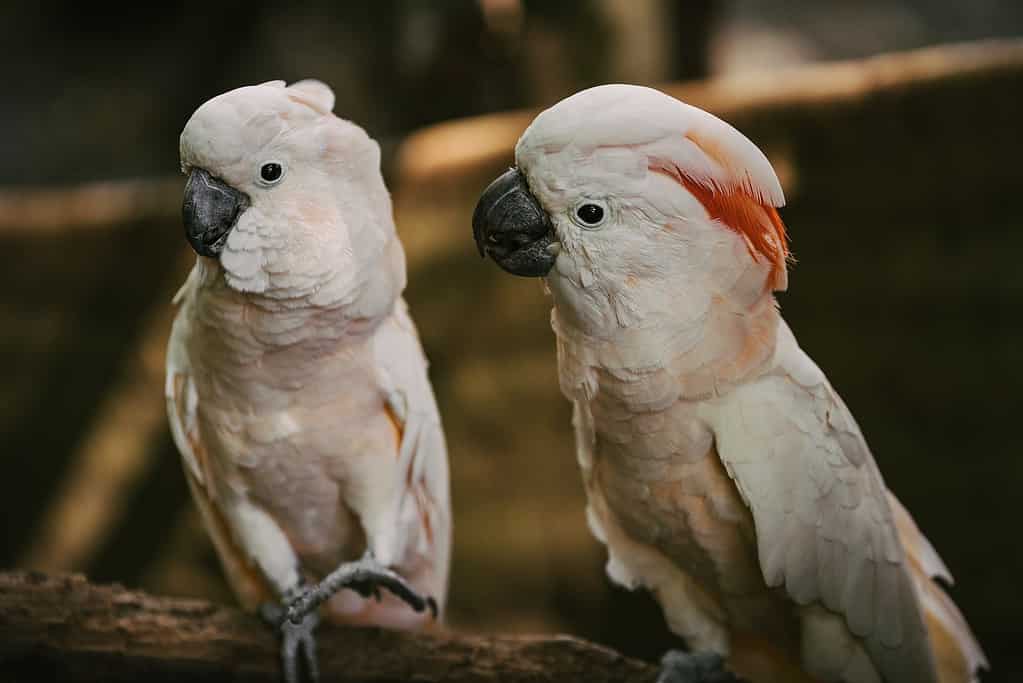When we think of animal intelligence, primates and dolphins often come to mind. But a new study highlights the surprising ingenuity of Goffin’s cockatoos, a species of white parrot, which has learned to soften its food by dunking it in water.

A new study from the University of Veterinary Medicine Vienna reveals that some of the Goffin’s cockatoos at their Goffin Lab dip their food (rusk) in water before consuming it, making the hard rusk softer and easier to chew.
They do this actively with every piece they pick to eat, spending a significant amount of time and energy on this process.
“To go through all this effort just to change the texture of your food is quite impressive,” Alice Auersperg, one of the study authors and the head of the Goffin Lab, told The New York Times.
The surprising food-soaking behavior
Goffin’s cockatoos are already known for their cleverness. Some previous studies have shown that these birds can open locks, raid trash bins, and even manufacture tools out of cardboard for grabbing hard-to-reach food items.
The authors of the current study also focused on such skills only, typically leaving the birds undisturbed during their lunchtime.
However, one day, a researcher accidentally observed a parrot named Pipin dunking its food in a water tub that the birds generally used for bathing and quenching their thirst. After some time, the researcher noticed two other cockatoos named Kiwi and Muki showing the same behavior. A quick search on YouTube depicts several other cockatoos exhibiting the same behavior.
This was surprising because rusk is fairly easily consumed by cockatoos, and most other birds also eat it directly without adding any personal touch.
They decided to further study this unique behavior and conducted an experiment involving 18 Goffin’s cockatoos. All of these birds were observed for 12 days during their lunchtime.
“We observed seven out of 18 cockatoos dunking food in the water. They dunked three food types: rusk, dried banana chips, and dried coconut chips. Other food types, like apple pieces, dried berries, seeds, or pellets, were never dunked during our observations,” the study authors note.
These findings also suggest that the birds had already learned which food items tasted good after soaking and which didn’t.
Interestingly, while some cockatoos dipped their food and instantly pulled it out and ate it, a few showed patience by waiting for up to 30 seconds. This allowed their rusk piece to absorb more water, resulting in a softer texture.
“They were willing to wait for it to soak, and that takes a lot of impulse control,” Jeroen Zewald, one of the study authors and a doctoral student at the University of Veterinary Medicine Vienna, said.
Do wild Goffin’s cockatoos also show this behavior?
The findings raise many new questions, for example, scientists still don’t know how the birds learned this behavior. Typically, during an experiment, researchers present a problem before the subjects who then solve it.
However, in this case, the parrots solved a problem that they encountered unrelated to any study. The researchers just accidentally observed them while they were implementing the solution.
So, whether Kiwi and Muki came up with the dunking technique independently or they learned it by watching Pipin, is unknown.
Another important question: is this a common behavior among Goffin’s cockatoos or is this something that is unique to the birds in captivity? Wild Goffin’s cockatoos don’t get to eat rusk and there are no water tubs in the forest, so can they also learn this behavior?
Hopefully, the study authors will find the answers to all such questions with further research.
The study has been published in the journal Biology Letters.






